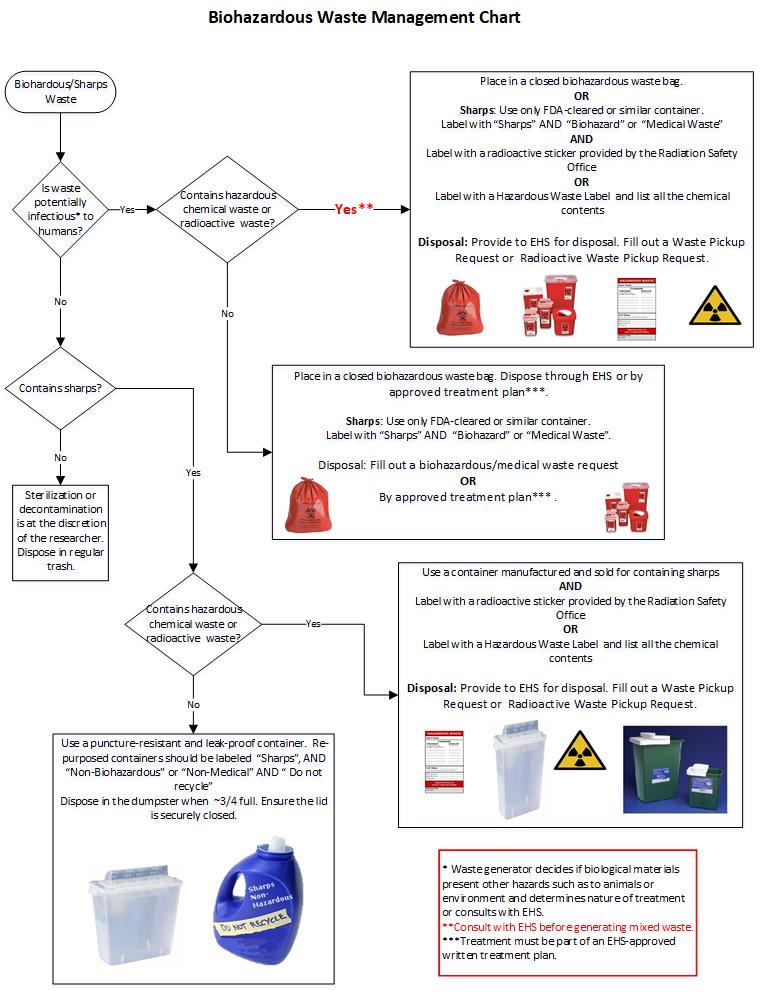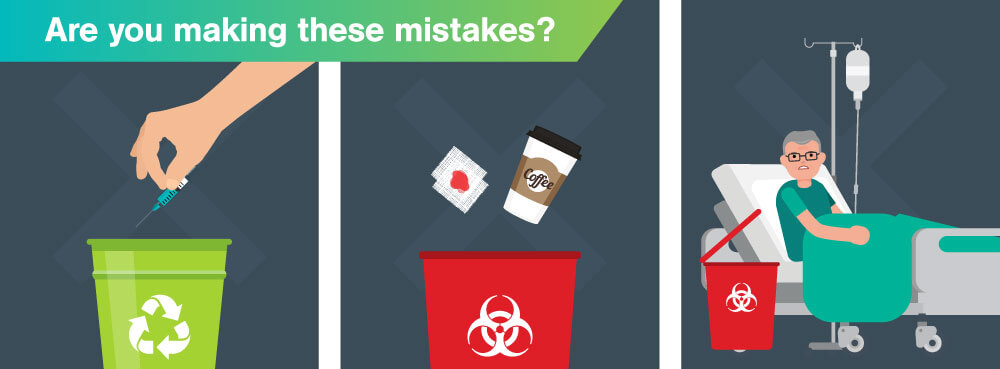Conformity and Regulations for Medical Garbage Disposal
Conformity and regulations for medical waste disposal play a critical role in guaranteeing the safety and security and well-being of both healthcare experts and the basic public. Appropriate administration of clinical waste is crucial to prevent the spread of infections, protect the setting, and keep public wellness. These regulations encompass various aspects, consisting of the category and partition of clinical waste, appropriate storage and handling treatments, as well as transport and disposal techniques.
Value of Compliance
The significance of compliance with guidelines for clinical waste disposal can not be overstated. Proper disposal of clinical waste is critical for ensuring the safety and security and health of health care workers, clients, and the general public. Medical waste, that includes things such as utilized needles, contaminated gloves, and biomedical waste, can posture significant health and wellness risks if not dealt with and gotten rid of correctly.
Compliance with laws makes sure that medical waste is managed in such a way that lessens the potential for exposure to transmittable illness and hazardous materials - medical waste disposal. It aids prevent the spread of infections, such as HIV, hepatitis B and C, and various other bloodborne pathogens. Conformity likewise plays a vital function in protecting the environment by avoiding contamination of water sources, soil, and air
Failure to abide with policies can cause severe effects for healthcare centers, including penalties, lawsuit, and damages to their credibility. In addition, non-compliance may jeopardize the health and wellness of healthcare workers, people, and the community.
Conformity with laws for medical garbage disposal calls for adherence to specific guidelines and methods. These might consist of proper segregation, packaging, labeling, and storage space of clinical waste. It also involves utilizing approved disposal approaches, such as landfilling, incineration, or autoclaving, depending on the sort of waste.
Regulative Agencies and Bodies
Regulative companies and bodies play an essential function in supervising conformity with regulations for medical waste disposal. These organizations are accountable for setting standards, guidelines, and protocols to ensure the safe and proper handling of clinical waste. They implement and keep an eye on compliance to protect public health and the setting.
Among the most popular regulatory agencies in the USA is the Environmental Defense Company (EPA) The EPA is accountable for managing the storage space, transport, therapy, and disposal of clinical waste. They establish guidelines for waste generators, carriers, and treatment facilities to adhere to, making sure that all necessary precautions are required to avoid the spread of diseases and contamination.
An additional crucial regulative body is the Occupational Safety and Wellness Administration (OSHA) OSHA sets policies and standards to secure workers from job-related dangers, including those relevant to medical waste. WasteX Medical Waste Disposal. They give guidelines for the secure handling and disposal of medical waste to secure staff members in health care centers
Along with these federal firms, specific states additionally have their very own regulatory bodies that manage medical waste disposal. These companies might have their own certain laws and demands that need to be complied with.

Classification and Segregation of Medical Waste
To ensure proper administration of clinical waste, it is important to classify and segregate it according to established standards and protocols. medical waste removal. Classification and partition play a vital role in lessening the threat of infection, shielding the setting, and making sure the safety of healthcare workers and the public
Medical waste is categorized right into different categories based on its possible risk level. These groups include transmittable waste, pathological waste, sharps waste, pharmaceutical waste, chemical waste, and radioactive waste. Each group requires details handling, storage space, transport, and disposal approaches to decrease the threat of direct exposure and contamination.
Segregation of medical waste involves dividing different kinds of waste at the resource. This process makes sure that waste with various risk levels is not blended, lowering the potential for cross-contamination and making disposal procedures much more effective. Correct partition is attained via the usage of color-coded labels and containers, which assist healthcare workers and waste monitoring workers deal with each kind and recognize of waste properly.
In enhancement to classification and segregation, medical care facilities need to also comply with regional, state, and federal policies concerning medical waste monitoring. These laws detail particular needs for storage, transport, treatment, and final disposal of medical waste, making certain conformity and maintaining public health and security.
Proper Storage Space and Dealing With Procedures
Appropriate storage and handling treatments play a critical function in making sure the secure and certified management of clinical waste. Clinical waste, that includes things such as made use of syringes, contaminated gloves, and expired medications, can present significant wellness and ecological risks otherwise managed appropriately. As a result, it is essential for medical care facilities and various other generators of medical waste to carry out rigorous storage space and taking care of procedures.
To start with, medical waste must be stored in sturdy, leak-proof containers that are particularly designed for this function. These containers should be identified with the global biohazard sign and words "medical waste" to clearly show the contents. Furthermore, the containers need to be maintained safely near stop any kind of prospective leakage or spillage.
Moreover, it is essential to segregate different kinds of clinical waste to stop cross-contamination. Sharps, such as needles and scalpels, should be saved in puncture-resistant containers to reduce the threat of injuries - WasteX Medical Waste Disposal. Chemical waste, such as disinfectants and solvents, must be kept independently from other kinds of clinical waste to avoid chain reactions or unsafe exposures

Transport and Disposal Approaches
Health care facilities have to make sure the safe transport and appropriate disposal of their medical waste to abide by guidelines and protect public wellness. Transportation and disposal methods play a crucial duty in avoiding the spread of infectious illness and reducing the ecological effect of clinical waste.
To move medical waste, health care centers must make use of puncture-resistant and watertight containers that are classified with the biohazard symbol. These containers must be firmly sealed to stop any kind of leak throughout transportation. Additionally, healthcare facilities ought to develop methods for the transport process, consisting of making use of dedicated lorries and experienced workers.
Once the medical waste gets to the disposal facility, it undertakes various techniques of treatment. One usual approach is incineration, which includes burning the waste at heats to ruin virus and reduce the volume of waste. One more approach is autoclaving, which makes use of steam and pressure to disinfect the waste. After therapy, the waste is generally sent out to a land fill or a waste-to-energy center for last disposal.
It is vital for health care facilities to collaborate with certified and permitted waste management firms to make certain correct transport and disposal of clinical waste. These business have the experience and sources to manage medical waste safely and in compliance with laws.
Verdict
Finally, compliance with policies for medical garbage disposal is of utmost value to make sure public health and wellness and safety. Governing firms and bodies play a critical function in imposing these regulations. Correct classification and segregation of clinical waste, along with complying with appropriate storage space and handling procedures, are vital to protect against contamination and the spread of illness. Sufficient transport and disposal techniques must be applied to reduce ecological effects. Overall, adherence to conformity and regulations is needed to efficiently take care of medical waste.
Clinical waste, which consists of items such as made use of needles, contaminated handwear covers, and biomedical waste, can pose major wellness risks if not managed and disposed of effectively.
These categories try this out include transmittable waste, pathological waste, sharps waste, pharmaceutical waste, chemical waste, and contaminated waste.Segregation of medical waste includes dividing various types of waste at the source. Proper partition is attained through the usage of color-coded containers and tags, which help health care employees and waste monitoring personnel take care of each kind and determine of waste appropriately.
Chemical waste, such as solvents and disinfectants, ought to be kept individually from various other kinds of clinical waste to protect against hazardous exposures or chemical reactions.